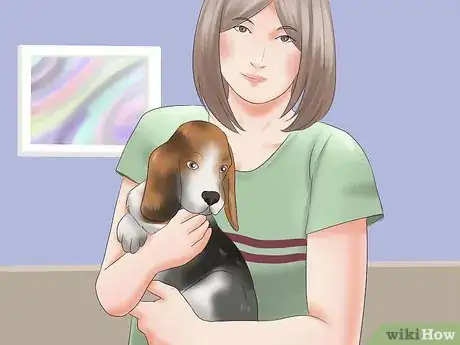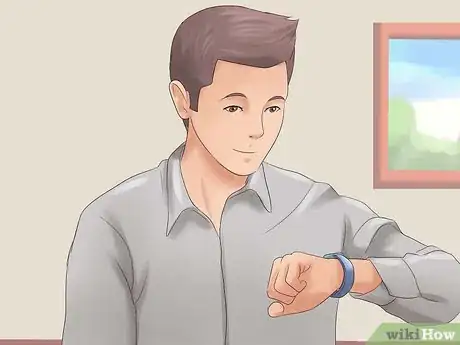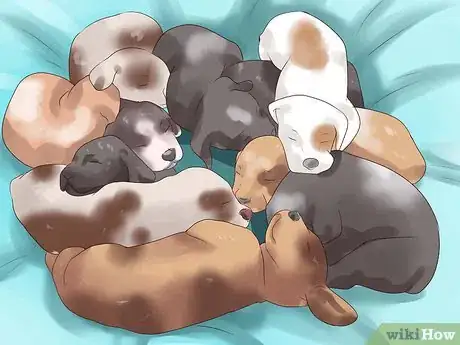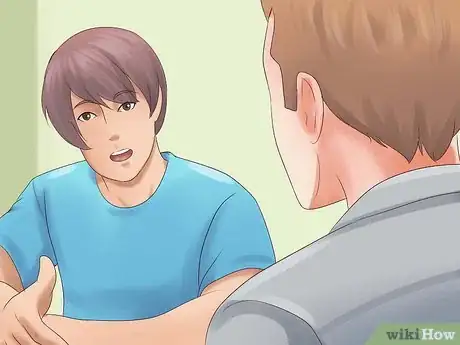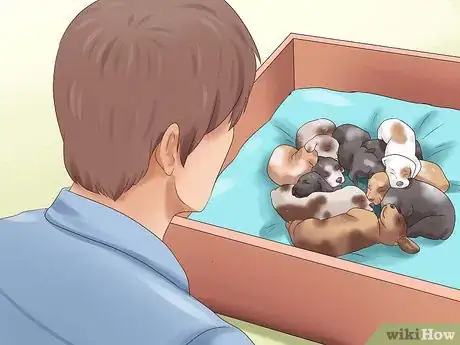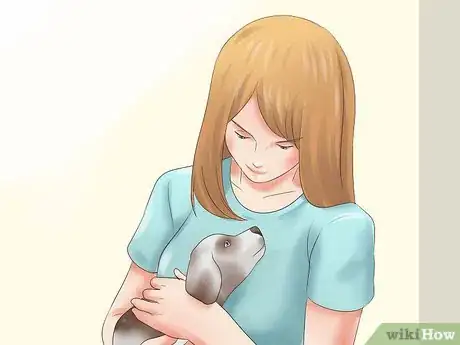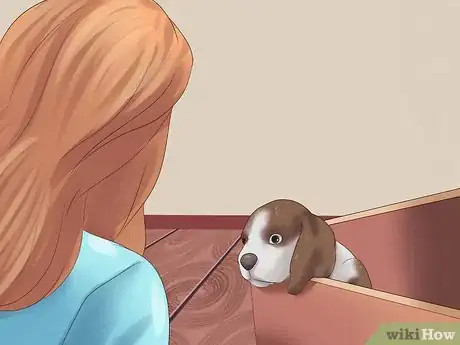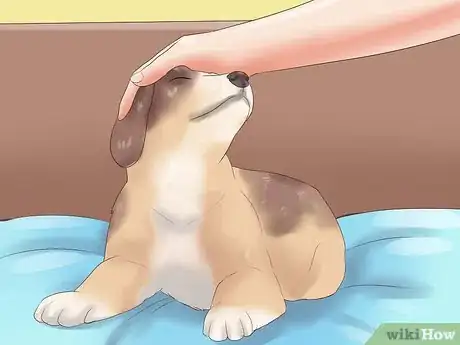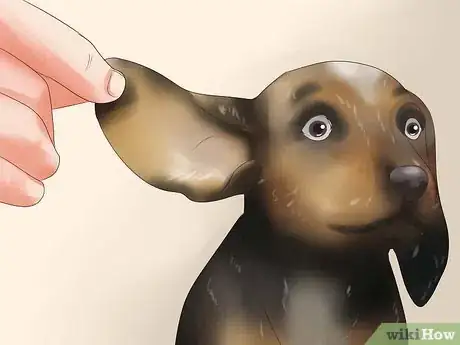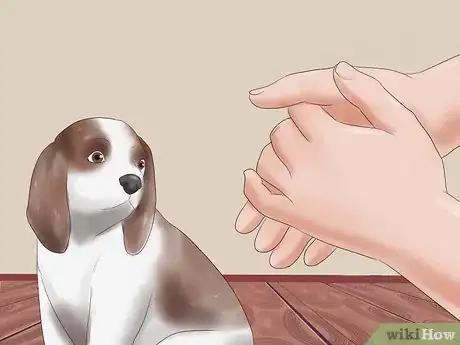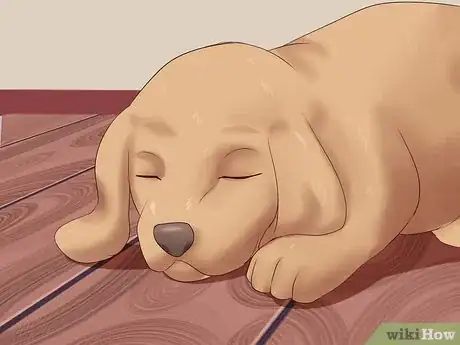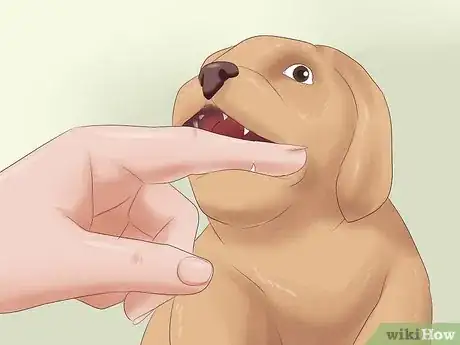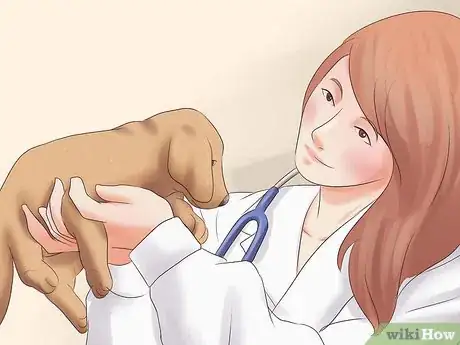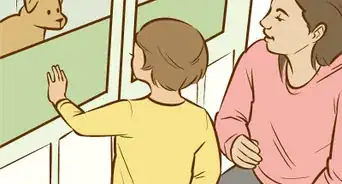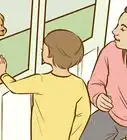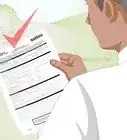This article was co-authored by David Levin. David Levin is the Owner of Citizen Hound, a professional dog walking business based in the San Francisco Bay Area. With over 9 years of professional dog walking and training experience, David's business has been voted the "Best Dog Walker SF" by Beast of the Bay for 2019, 2018, and 2017. Citizen Hound has also been ranked #1 Dog Walker by the SF Examiner and A-List in 2017, 2016, 2015. Citizen Hound prides themselves on their customer service, care, skill, and reputation.
There are 8 references cited in this article, which can be found at the bottom of the page.
wikiHow marks an article as reader-approved once it receives enough positive feedback. This article received 24 testimonials and 93% of readers who voted found it helpful, earning it our reader-approved status.
This article has been viewed 539,223 times.
After much deliberation, you’ve finally decided its time to add a new, furry member to your family. You’ve researched dog breeds to find one that fits your lifestyle, and you’ve located a reputable breeder[1] with a litter of new pups. Now you need to choose the right pup among the litter, the final step to finding the dog for you. Keep in mind there is no perfect “puppy test” to find the pick of the litter. Instead, focus on finding the right dog for you and your family.
Steps
Visiting the Litter
-
1Try to buy a puppy from a breeder instead of a pet store. While it may be tempting to scoop up the adorable pup in a pet store window, buying a pup this way can be risky. Most pet store puppies are on their own in a small glass cage. So you won’t get the opportunity to see how the pup interacts with his litter mates. This will make it difficult to assess the pup’s personality and demeanor.[2]
- Most puppies at pet stores have been weaned too early, so they never get the chance to learn how to act from their mother or their litter mates. A pup that is weaned at five or six weeks and shipped to a pet store will have had no guidance from their mother or from a reputable breeder. Without this guidance, there’s a good chance the pup will become fearful or aggressive, rather than a man’s best friend.
- You should also know that puppies sold in pet shops were born most of the time in puppy mills (the adult dogs stay in cages all their lives !) and in awful conditions. Do not buy those puppies if you want to put an end to such horrible practices.
-
2Set up a visiting time with the breeder right after the pups have been born. You don’t want to pick puppies from a litter where the first half of the litter have already been sold. The best pups usually sell first, so try to set up a visit with the breeder right after the litter has been born.[3] Though the breeder likely won’t have you visit the pups until they are 7-8 weeks old, its best to be at the top of the visiting list.
- Bring the most practical member of the family with you or a friend you trust. It helps to have someone evaluate the pups with you, as it is a big life decision.
- Before the pups are born, keep in contact with the breeder. The breeder should then keep in touch to let you know how the mother is doing and when she expects the litter to be born.
Advertisement -
3Do not buy puppies from the mother's first litter. Ask the breeder which litter this is for the mother of the pups. Ideally, you want to buy a pup from the mother’s third litter by the same stud (or dad). This will ensure the mother has produced healthy pups before with the same father.
- The mother of the pup will have a big impact on your pup’s health and personality. A poor mother will likely produce a weak litter, even with a strong sire, or father. So its important to spend time with the mother of the pups before the litter is born and talk to the breeder about the health of the mother dog.
-
4Discuss the health of the litter with the breeder.[4] A good breeder will be knowledgeable about the general health and demeanor of the litter. The breeder should be confident about the health of the mother pup. They should also allow you to interact with both the mother pup and the litter during your visit.[5]
- If you seek out a reputable breeder and spend time at their facility, you should now have a pretty good rapport with the breeder. So you can count on her to help you narrow down your choices in the litter. The breeder has watched the puppies grow. So she will know which pups are dominant or more of a handful, and which ones are shy or mischievous.
- During your visit, don’t be afraid to ask for the breeder’s opinion about the litter. But, make sure you also do your own checks on the puppies to confirm their health and personality.
Checking the Puppy’s Behavior and Demeanor
-
1Observe the litter as a whole. Notice how the pups interact with each other. While you want an active, playful pup, you also want to avoid a pup that is dominant with his littermates or shy with his littermates.[6]
- Make sure the puppies are friendly, curious, and trusting around their litter mates and around you. They should crowd at your feet, tug your shoelaces, crawl into your lap, and stare at you. They may even start playing with you and/or begin wrestling with each other.
- If there are four puppies and three of them run away or bark suspiciously at you, you may not find the right pup for you in this litter. The fourth puppy, though not aggressive or fearful, may be too shy. Shyness and distrust could be in the pup’s genes, and this could lead to an anti-social personality when the pup becomes an adult.
- Don’t let the breeder laugh off the puppies’ shy or aggressive personalities. If the puppies appear too aggressive or too shy, this may be a sign the breeder has not done a great job of breeding them. The breeder should have socialized the puppies so they are comfortable around people.
- Avoid buying the largest or smallest puppy in the litter. Instead, look at the litter size -- generally, the more puppies in the litter, the healthier they will be.[7]
-
2Identify which puppy personality type is right for you. Consider the personality type you are looking for in your new dog. Are you and your family interested in an eager to please pup or a more independent pup? Discuss the personality types in the litter with the breeder.[8] There are several personality types for puppies, including:[9]
- The Bully: the bully pup may seem very social and interactive at first. But notice if she steals toys from other puppies or plays rough. She may also try to scale the enclosure or climb on the backs of her litter mates. These are signs of determination, smarts, and will power, but the bully personality may not fit your home life. You will need to have lots of time to challenge and take care of this puppy. So if you have other demands on your time or a lot of stress in your home life, the bully pup may not be for you or your family.
- The Rebel: this type of pup is quick-thinking, fun-loving, and engaging. They may be playful and energetic like a bully pup, but more sensitive and less aggressive. Rebel pups will be personable, without being headstrong. So they are a good match for an active owner or a family with older children.
- The Independent Thinker: this type of pup is interactive and playful, but also happy sitting or playing with a toy on their own. These pups are a good match for a home that is stable and calm, possibly with older owners or no children.
- The Eager to Please: the eager to please pup may seem obvious. After all, who doesn’t want an eager and excited pup ? But you will need to be a direct and firm owner with eager to please pups. Lots of training and reinforcement will be needed for this personality type. But with good training and discipline, an eager to please pup can show you full cooperation. These pups are great companions for a family.
- The Relaxed pup: this personality type may be less intelligent than their siblings, but they will balance play, interaction and sleep well. They will also be a great fit for relaxed, easy going owners. Go for a relaxed pup if their personality fits their breed and you are looking to complement a home environment with young kids.
- The Timid pup: also known as the shy pup, these guys are not born with a strong sense of self. So they may creep on their bellies towards you or arch their back in total submission. You may be sucked in by the sweet, timid nature of these pups. But a timid pup will need a lot of time and patience to foster their self-esteem and get them comfortable around others. They are more suitable for single owners with lots of time for training and attention, rather than a family with children.
- Keep in mind the breed of the dog will often affect their personality traits and type. Discuss the pups’ personalities with the breeder to get a better sense of how their breed corresponds with their personality.
-
3Watch individual pups in the litter.[10] Focus on finding a pup that isn’t too energetic but isn’t too shy. While you may have a certain personality type in mind, most families do best with a pup who is neither too bossy or too submissive. Look for a good-natured, middle of the road pup who doesn’t growl or bite. You want a confident pup who struts up to you and your family with their ears held high and their tail wagging with excitement.[11]
- Don’t try to convince yourself you can bring a shy puppy out of his shell. If shyness if hardwired into his genes, a shy pup will grow into a shy adult. A shy adult dog may be difficult to live with and may even snap at you when he is startled or uncomfortable.
-
4Interact with the pups one by one. Once you’ve narrowed your search down to a few pups you like, ask the breeder if you can interact with them one by one.
- Pick up each puppy, hug and cradle him. If he reacts by squealing and wiggling, this is not a good sign. You may have behavioral issues with a pup who is squeamish or shy about being picked up. But a small struggle at first, followed by quickly settling down and looking at you is a better sign. One good trick is to pick up the puppy. If it immediately rolls over, that is a great sign.
- Touch the puppies on the paws, mouth, and ears to gauge their reaction. A puppy who has been handled from an early age won’t mind you touching them in these areas.
- Sit or kneel on the ground and call the puppy to you. Snap your fingers or pat the ground to get the puppy’s attention. If he comes to you quickly, he may have a strong attachment to people.
Checking the Puppy’s Physical Health
-
1Do a once over visual check of each puppy. They should be nice and round, not fat, and definitely not skinny. Even a thin breed like Greyhounds and Whippets are little round pups until they are about four months of age.
-
2Check the pups’ eyes, ears, gums, teeth, and rear end. A healthy puppy should have clear, bright eyes with no crust or discharge. They should also have clean ears and clean gums and teeth.[12]
- The pups should also have bright shiny coats and no sign of dirt or debris on their bodies or around their rear ends.
- There should be no pus or feces around their genital area.
-
3Conduct a hearing and a vision test. Once you have narrowed down your search to one or two pups you like, run two tests on them to make sure their hearing and vision are sound.[13]
- To run a hearing test, clap your hands behind the pup’s head to ensure they react. Or stamp your feet behind them or drop a set of keys near them. Keep in mind it is difficult to pick a deaf puppy out of a pen that is crowded with other dogs. So try to run this test when the pup is on their own or away from the litter.
- To run a vision test, roll a ball within the pup’s field and vision and notice if he reacts to it by approaching it and playing with it.
-
4Notice the pups’ breathing and gait. A healthy pup will breathe quietly, without coughing or sneezing a lot. There should also be no crust or discharge around the pup’s nostrils.
- It’s also important to check that the pup walks and runs normally without limping or seeming stiff or sore. This will ensure they do not have any hip or joint issues that could develop into something worse when they grow into adulthood.[14]
-
5Test the pup’s jaw control. Do this by allowing the puppy to mouth your hands. When the puppy works his way to a forceful nip, respond with a high-pitched “Ouch!” Then, observe the puppy’s reaction. If the pup is excited, you may need to repeat this test. Notice if he catches on to your pain response and reacts with fear or concern, rather than excitement.[15]
- Don’t be too concerned if the pup notes your reaction, stops nipping for a moment, and then returns to chomping on your fingers. This is a normal reaction for a pup.
- Pups who respond appropriately to people and dogs when they display pain are more likely to develop into adult dogs with good control over their jaws. Good jaw control means your dog can get into play fights with another dog without causing injury. This also makes them gentler when taking food from people’s hands or when playing with people.
- Puppy who react to your pain will also be more obedient to you as their owner.
-
6Take your new pup to the vet a few days after you bring them home. Bring a copy of the pup’s vaccination and worming record, as well as any other medical records for the pup. The breeder should provide these for you before you buy the pup.[16]
- Talk to the vet about puppy care and maintenance.
-
7Plan on keeping your new pup at home, except for short visits, until he is 12-16 weeks old. Puppies get their immunity to disease from their mothers, but as the pup grows, there is a gap in immunity until he gets all this shots and vaccines. So keep your puppy healthy by limiting his exposure to short trips to the vet until he reaches 16 weeks old.[17]
Community Q&A
-
QuestionHow should I make a puppy happy
 Community AnswerJust reward your puppy for good behavior and pay lots of attention to it.
Community AnswerJust reward your puppy for good behavior and pay lots of attention to it. -
QuestionThe breeders house seems a bit dodgey. Should I still get a puppy from them?
 SomebodyWhoHelpsCommunity AnswerFirst, temperament test the dog. If the breeder seems to cover up something or says things like "He never does that, it's fine," beware.
SomebodyWhoHelpsCommunity AnswerFirst, temperament test the dog. If the breeder seems to cover up something or says things like "He never does that, it's fine," beware. -
QuestionHow do I choose a dog from online?
 Community AnswerYou can't pick a dog online. You can look at litters in online ads posted by breeders, but you should never choose a puppy until you've seen it in person. Also, if you can't see the mother for any reason, you should leave - a good breeder will always have the mother available for viewing.
Community AnswerYou can't pick a dog online. You can look at litters in online ads posted by breeders, but you should never choose a puppy until you've seen it in person. Also, if you can't see the mother for any reason, you should leave - a good breeder will always have the mother available for viewing.
References
- ↑ https://www.wikihow.com/Find-a-Reputable-Dog-Breeder
- ↑ http://www.canismajor.com/dog/pikpup.html
- ↑ http://www.2ndchance.info/choosedog.htm
- ↑ David Levin. Dog Training Coach. Expert Interview. 19 December 2019.
- ↑ http://www.canismajor.com/dog/pikpup.html
- ↑ http://www.yourpurebredpuppy.com/buying/articles/how-to-choose-a-puppy.html
- ↑ http://www.2ndchance.info/choosedog.htm
- ↑ David Levin. Dog Training Coach. Expert Interview. 19 December 2019.
- ↑ http://www.dummies.com/how-to/content/how-to-judge-a-puppys-personality.html
- ↑ David Levin. Dog Training Coach. Expert Interview. 19 December 2019.
- ↑ http://www.dog-obedience-training-review.com/choosing-a-puppy.html
- ↑ https://www.aspca.org/pet-care/virtual-pet-behaviorist/dog-behavior/choosing-puppy-litter
- ↑ http://www.dog-obedience-training-review.com/choosing-a-puppy.html
- ↑ http://www.dog-obedience-training-review.com/choosing-a-puppy.html
- ↑ https://www.aspca.org/pet-care/virtual-pet-behaviorist/dog-behavior/choosing-puppy-litter
- ↑ http://www.dog-obedience-training-review.com/choosing-a-puppy.html
- ↑ http://www.canismajor.com/dog/pikpup.html
About This Article
To pick a puppy from a litter, start by finding a reputable breeder instead of going to a pet store, since pet stores don’t give you the opportunity to see how the puppies interact with the rest of their litter. Next, interact with the puppies one by one and look for a good natured puppy that is active and playful, but not too shy or overly aggressive. Then, check that the puppy has clear eyes and ears, a shiny coat, and a round build, which are indications of good health. For more tips, like how to identify the puppy personality type that is right for you, read on!
